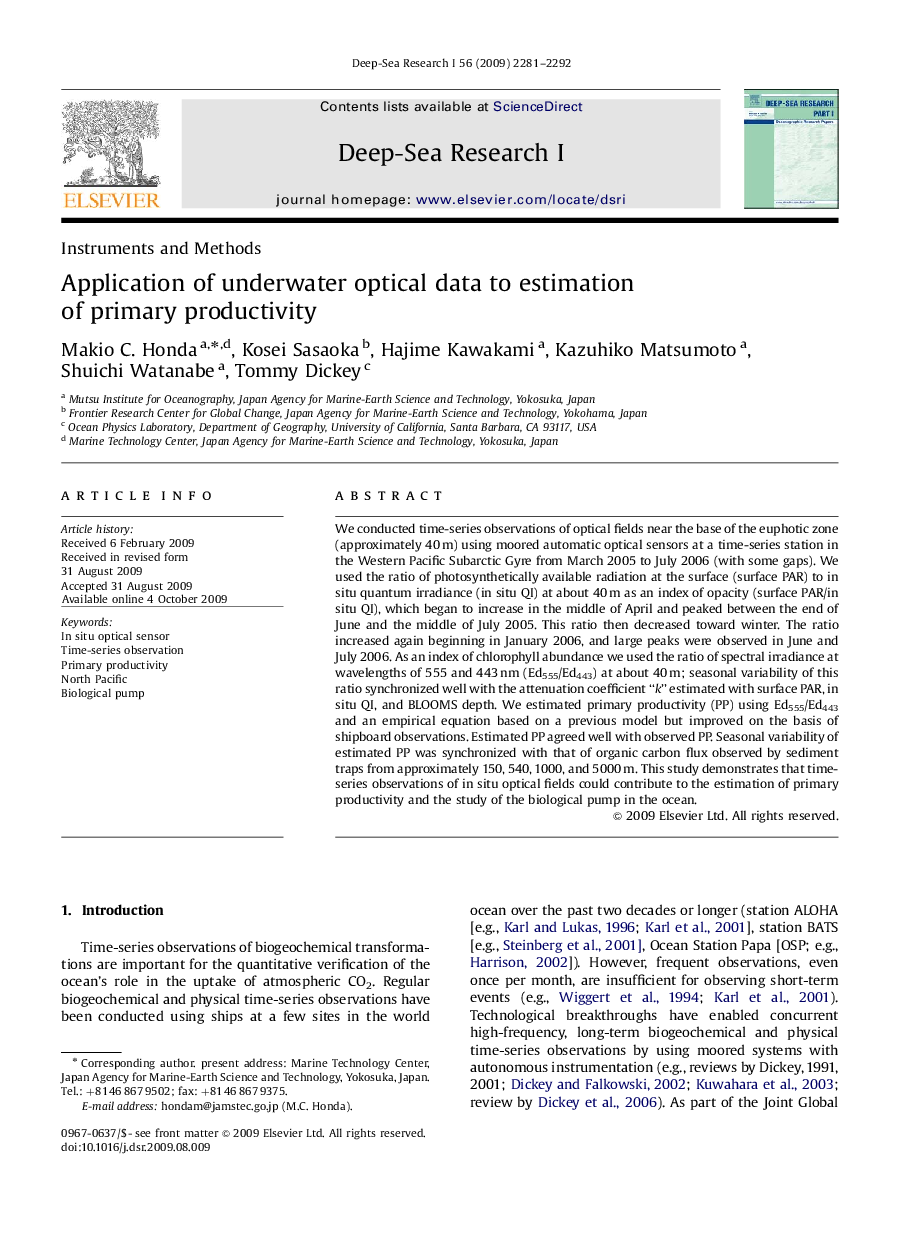| Article ID | Journal | Published Year | Pages | File Type |
|---|---|---|---|---|
| 4534963 | Deep Sea Research Part I: Oceanographic Research Papers | 2009 | 12 Pages |
We conducted time-series observations of optical fields near the base of the euphotic zone (approximately 40 m) using moored automatic optical sensors at a time-series station in the Western Pacific Subarctic Gyre from March 2005 to July 2006 (with some gaps). We used the ratio of photosynthetically available radiation at the surface (surface PAR) to in situ quantum irradiance (in situ QI) at about 40 m as an index of opacity (surface PAR/in situ QI), which began to increase in the middle of April and peaked between the end of June and the middle of July 2005. This ratio then decreased toward winter. The ratio increased again beginning in January 2006, and large peaks were observed in June and July 2006. As an index of chlorophyll abundance we used the ratio of spectral irradiance at wavelengths of 555 and 443 nm (Ed555/Ed443) at about 40 m; seasonal variability of this ratio synchronized well with the attenuation coefficient “k” estimated with surface PAR, in situ QI, and BLOOMS depth. We estimated primary productivity (PP) using Ed555/Ed443 and an empirical equation based on a previous model but improved on the basis of shipboard observations. Estimated PP agreed well with observed PP. Seasonal variability of estimated PP was synchronized with that of organic carbon flux observed by sediment traps from approximately 150, 540, 1000, and 5000 m. This study demonstrates that time-series observations of in situ optical fields could contribute to the estimation of primary productivity and the study of the biological pump in the ocean.
